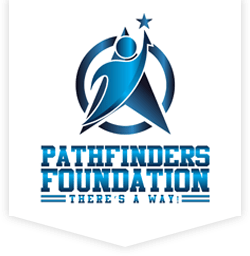The military completes an After Action Review (AAR) after every mission, even after training events and after stages of training events. It is an excellent tool for organizational and individual learning. An AAR is a formal or informal way to review an activity and all the elements that go into the activity against actual and intended results. In addition to organizational and individual learning, it can be an excellent tool for leadership development, innovation, organizational engagement and continuous improvement.
When I conduct an AAR, I usually like to keep it simple, and see the direction the group takes it. We walk through a structured discussion, using the following questions:
- Did we accomplish the mission? Why? or Why not?
- What went right?
- What went wrong?
- What should we sustain or maintain when we conduct this activity (or similar activities) again?
- What should we change?
- What other suggestions would anyone like to make to improve the activity or outcomes in the future?
These are my questions, and most of these are consistent with what I learned in my time in the military. However, you may add your own questions or specific points to discuss. You can also walk through the stages of the operation: Planning, Execution, Completion and Folow-through. And, you may talk through the elements such as Communication, Clarity of the Mission, How the mission was developed, Resource Sufficiency and Allocation, Clarity of Objectives, Timing, Teamwork, etc.
It is important when conducting an AAR that it not be a time for critiquing individuals in the organization. We do not want to cause people to clam up, concerned about hurting someone’s feelings or making someone feel as though they are attacked. Likewise, it is important to encourage and remind participants that the purpose is organizational improvement, getting better. Regardless of the activity, we all have room for improvement. Be thick-skinned, not sensitive, to hearing critique. Accept the feedback. This may be especially true if actions of individuals need to be discussed, and they may need to express what they were thinking in the moment. We all understand that hindsight is 20-20. We are not trying to “Monday Morning Quarter”, but to understand the rationale for decisions in the moment.
I believe that the AAR is a simple, but impactful, tool that should be included in school leadership programs. Schools host many activities, some led by staff, but many, maybe most, hosted by students and staff. An AAR process, fosters foresight, planning, leadership and student and staff involvement.
Let’s take one big event, for example, to illustrate. It is prom season. I’ll speak for myself in observing that the Prom has not changed much since the 30-plus years ago when I was in high school. That is because we all have a fixed idea of what the Prom should be: Formal Attire, some food or refreshments, a DJ or Band and a Dance Floor. Check, Prom Complete. Did anyone ever ask the participants for formal feedback? Did we play the music they wanted? Did we ask them before the prom what songs they wanted played? Could game areas be set up, away from the dance floor, for gaming, playing Guitar Hero or darts, horseshoes, etc. What is the mission or purpose of the Prom? Were there opportunities for Flash Mob routines, and choreographed dance and singing? Would participants like that? Perhaps certain groups may want to put together short performances, such as a competition choir. You get the idea.
Imagine students going through this kind of activity evaluation. What all would they learn about planning, leadership, innovation, customer feedback, communication, . . . . Imagine if they went through an AAR after every significant activity. The learning would be enormous and the skills practiced, over and over. We would produce adults who are much better positioned to lead and begin the process of becoming a mature leader.
Now, how could we improve the Friday night football game? Are we being as intentional at developing leadership and other life skills via our sports programs as we could? Are we demonstrating excellence in sportsmanship with all we do in our sports programs? Does every participant and volunteer know what we are trying to accomplish? Are we impacting all who attend our events with every element of the event from parking, ticket sales and collection, PA Communications, and the like? Do attendees know what is available at the concession stand and where restrooms are located? Have they been welcomed? How good was the welcome? As you may see, I suspect there are elements that you may not have considered, or may have left on autopilot. You can use the AAR for intentional organizational learning and improvement. Let us know your ideas, how you can or have used the AAR to improve aspects in your organization.
